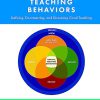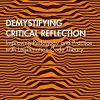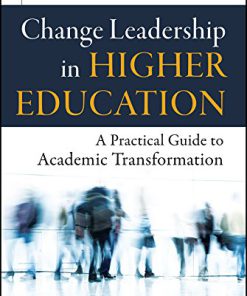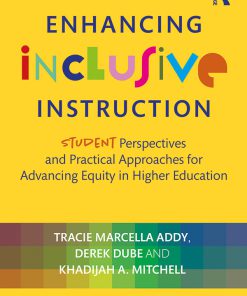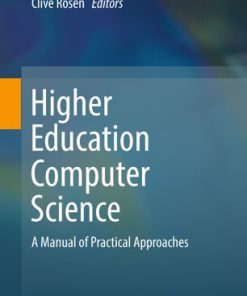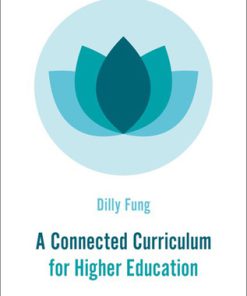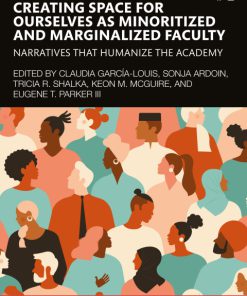Creating Culturally Affirming and Meaningful Assignments A Practical Resource for Higher Education Faculty 1st Edition by Christine Harrington 1003835646 9781003835646
$50.00 Original price was: $50.00.$25.00Current price is: $25.00.
Creating Culturally Affirming and Meaningful Assignments; A Practical Resource for Higher Education Faculty 1st Edition by Christine Harrington – Ebook PDF Instant Download/DeliveryISBN: 1003835646, 9781003835646
Full download Creating Culturally Affirming and Meaningful Assignments; A Practical Resource for Higher Education Faculty 1st Edition after payment.
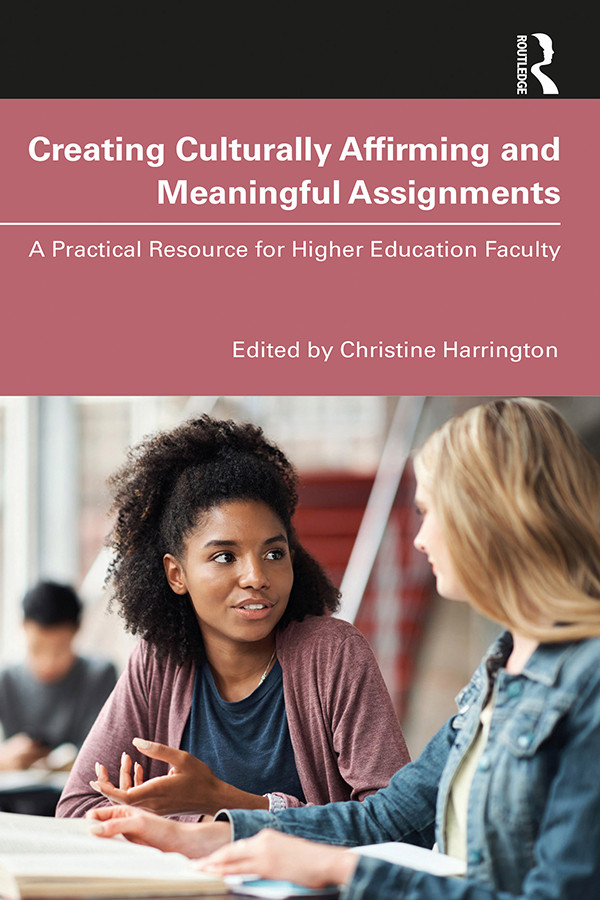
Product details:
ISBN-10 : 1003835646
ISBN-13 : 9781003835646
Author: Christine Harrington
Creating Culturally Affirming and Meaningful Assignments offers principles, strategies, and examples to aid in the development of inclusive college coursework in which all students feel seen and valued. This resource prepares instructors to proactively consider ways to honor and engage with students’ varied identities and lived experiences through assignments. Chapters cover the course design process, methods on getting to know your students, assignment options beyond the exam, and more. Reflection questions at the end of each chapter serve as a springboard for faculty and leadership conversations on equitable and inclusive teaching practices, while the appendix features 20 example assignments sourced from various higher education disciplines. An accessible, practical read, this guidebook is for any higher education instructor who wants to reimagine their assignments to center and celebrate students’ varied cultural backgrounds and experiences.
Creating Culturally Affirming and Meaningful Assignments; A Practical Resource for Higher Education Faculty 1st table of contents:
1. Why Culturally Affirming and Meaningful Assignments Matter and the Course Design Process
Historical Context
Instructor Positionality and Course Design
Mayra Olivares-Urueta’s Positionality
Carlos Morales’s Positionality
Instructional Design Approaches
Understanding by Design: A Backward Course Design Process
Addie
Communicating Course Design via the Syllabus
Conclusion
Reflection Questions
References
2. What Makes Assignments Culturally Affirmative?
Principle 1: Value Students’ Cultural Identities
Principle 2: Acknowledge the Ways Culture Informs Content and Learning Processes
Principle 3: Uphold Multiculturalism as a Learning Asset
Principle 4: Support Relational Engagement with Students
Principle 5: Offer Diverse Ways for Students to Demonstrate Their Learning
Conclusion
Reflection Questions
References
3. What Makes Assignments Meaningful?
Guiding Principles for Meaningful Assignments
Principle 1: Aligned with Learning Outcomes
Principle 2: Personally Relevant and Culturally Affirming
Principle 3: Challenging, Empowering, and Growth Focused
Principle 4: Authentic with Real-World Value
Principle 5: Skill-Based and Relevant to the World of Work
Conclusion
Reflection Questions
References
4. Getting to Know Your Students: A First Step in Creating Culturally Affirming and Meaningful Assignments
Role of Relationships in Learning
Strategies for Developing Instructor–Student and Student–Student Relationships
Before Class Begins
Early in the Semester Strategies for Getting to Know Students and Developing Relationships
Strategies to Use throughout the Semester to Nurture Relationships
Conclusion
Reflection Questions
References
5. Exploring Assignment Options beyond the Exam
Challenges Associated with Traditional Assignments
Alternative Summative Assessments
Infographics
One-Pagers, Executive Summaries, or Policy Briefs
Pecha Kucha Presentations
Media-Based Assignments: Podcasts and Videos
Social Media Posts or Blogs
Book Reviews
Experiential Learning Assignments
Training Manuals or Playbooks
Formative Assessments
Conclusion
Reflection Questions
References
6. Giving Choice in Assignments
Why Choice Matters
Choice and Learning Outcomes
Some Words of Caution
Types of Choice
Content Choices
Product Choice
Process Choice
Conclusion
Reflection Questions
References
7. Being Transparent about Assignment Expectations
Why Transparent Assignments Matter
Student Benefits
Instructor Benefits
What Are Transparent Assignments?
Purpose
Steps or Tasks
Criteria for Success
Tools for Creating Transparent Assignments
Conclusion
Reflection Questions
References
8. Providing Assignment Support and Feedback
The Why of Support and Feedback: Helping Students Grow through Assignments
Approaches to Support
Support via Exploring Tacit and Background Knowledge
Support via Scaffolded Examples
Support via Formative Assessments
Support via Connections to Campus Resources
Providing Assignment Feedback
Characteristics of Useful Feedback
Peer Feedback
Reflecting on Feedback Activities
Conclusion
Reflection Questions
References
People also search for Creating Culturally Affirming and Meaningful Assignments; A Practical Resource for Higher Education Faculty 1st:
culturally affirming practices
culturally affirming meaning
culturally affirming definition
culturally affirming
creating culturally responsive lesson plans
Tags: Culturally Affirming, Meaningful Assignments, Practical Resource, Higher Education, Christine Harrington
You may also like…
Education Studies & Teaching - School Education & Teaching
Education Studies & Teaching - History of Education
Computers - Computer Science
Higher Education Computer Science A Manual of Practical Approaches Jenny Carter
Education Studies & Teaching - Higher & Further Education
Business & Economics - Management & Leadership
Education Studies & Teaching - Higher & Further Education


